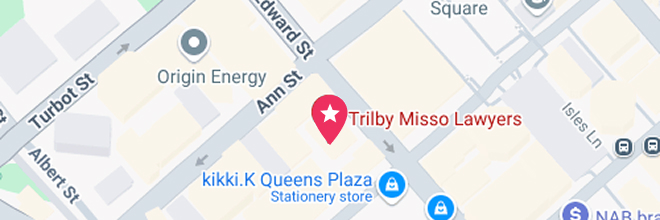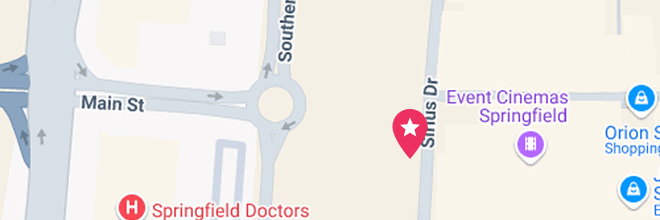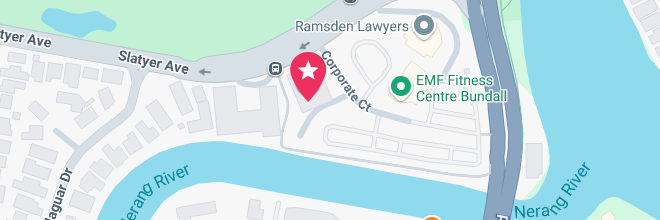Our Brisbane CBD Office
- Suite 400, Level 4/288 Edward St, Brisbane City QLD 4000
- (07) 3910 5470




Queensland is famous for its unique landscapes and hot climate. However, the sunshine state is also home to several accident hotspots. It is always crucial to be aware of potential accidents and injuries that may occur in the workplace.
Whether you’re a local resident or a visitor, knowing where accident hotspots in Queensland might be and what they may look like is extremely important. When you can identify workplace accidents in Queensland, you will be able to take the necessary precautions to significantly reduce the risks of such incidents occurring. From construction sites to busy intersections, being informed about these areas is paramount for your safety.
Construction sites are recognised as one of the most perilous workplaces, with WorkSafe Queensland reporting alarming statistics of workplace injuries. Moreover, the construction industry itself is associated with a high rate of workplace injuries. Per statistics released by WorkSafe Queensland, these injuries cover a variety of different incidents, including (but not exclusive to):
The impact of such incidents can be severe, leading to pain and suffering, loss of income and loss of ability to work for those involved.
To enhance construction site safety, it is essential to implement rigorous preventive measures. This includes the use of appropriate personal protective equipment (PPE), regular safety inspections, and the establishment of clear safety protocols. Emphasising the importance of adherence to health and safety regulations and the provision of comprehensive training to all personnel are crucial elements in reducing workplace accidents. Additionally, fostering a culture of safety consciousness and responsibility among workers is fundamental to ensuring a secure working environment.
The amalgamation of heavy machinery, hazardous materials, and demanding working conditions within industrial sites creates an environment prone to accidents.
Implementing robust safety protocols and best practices is imperative to ensure a safe working environment in industrial areas. Such protocols include comprehensive safety training for all employees, regular equipment maintenance, and adherence to regulatory standards. Additionally, it is essential for industrial areas to conduct regular safety audits, maintain clear and visible signage for potential hazards, and encourage a culture of reporting any unsafe conditions. In line with these expectations upon the employer, all employees must be provided with the correct personal protection equipment (PPA) to fit the needs of their job, as well as consistent healthcare check-ins on those working in hazardous environments.
Workplace accidents in Queensland within the road transport and logistics industries can range from vehicle collisions to manual handling injuries. Workers in this sector are also at risk of slips, trips, and falls, particularly when loading and unloading goods. It’s crucial to understand the specific risks and take proactive measures to mitigate them. Moreover, the long-term health effects of repetitive strain injuries, the risks associated with prolonged sitting or standing during driving or handling tasks, and the potential exposure to hazardous materials should not be overlooked.
To safeguard workers in road transport and logistics, a comprehensive approach to safety is essential. This includes regular training on safe handling techniques, the use of appropriate personal protective equipment, and the implementation of stringent vehicle maintenance protocols. Additionally, promoting a culture of safety consciousness throughout the industry can further reduce the likelihood of workplace injuries. Moreover, utilising technology such as telematics and driver assistance systems, enforcing strict regulations on driving hours, and ensuring adequate rest periods for drivers are crucial aspects of ensuring worker safety in this sector.
The road transport and logistics sector faces ongoing challenges in maintaining the safety of its workers. It must continually adapt to new risks arising from evolving technology, changing traffic conditions, and the introduction of new regulations. Innovations such as the integration of artificial intelligence in vehicle safety systems, the development of advanced driver assistance technologies, and the use of predictive analytics to identify potential hazards show promise in enhancing worker safety. Moreover, collaborative efforts between industry stakeholders, regulatory bodies, and technology developers are crucial in addressing these challenges and driving forward safer practices in road transport and logistics.
In healthcare facilities, the safety and wellbeing of both patients and staff are of paramount importance. However, due to the nature of the work, healthcare workers are often exposed to various occupational hazards, leading to a higher risk of workplace injuries in Queensland. This can include musculoskeletal injuries from lifting patients, exposure to infectious diseases, needlestick injuries, and violence from patients or visitors. Furthermore, psychological distress and burnout are prevalent due to the demanding nature of healthcare work, potentially leading to long-term health issues if not addressed effectively.
Several common hazards and risks exist for healthcare workers, including exposure to harmful chemicals, biological hazards, workplace violence, and ergonomic risks due to patient handling and awkward postures. These factors can impact the physical and mental wellbeing of healthcare professionals. Moreover, the risk of contracting infectious diseases, especially in high-demand environments such as emergency rooms and intensive care units, is a significant concern for healthcare workers.
To mitigate the risk of workplace accidents in Queensland and ensure a safe working environment, healthcare facilities can implement various preventive strategies. This may involve providing adequate training on infection control, implementing safe patient handling techniques, offering personal protective equipment, and fostering a culture of reporting and addressing workplace violence. Additionally, promoting mental health support services, establishing regular wellness programs, and encouraging open communication channels can contribute to a supportive and healthier work environment for Queensland healthcare professionals.
With the ever-evolving nature of the retail and hospitality industries, it is imperative to examine the impact of workplace injuries in Queensland on employees and businesses. By delving into the specific trends and consequences of these incidents, we can gain a deeper understanding of the challenges faced within these sectors, enabling the development of more effective safety strategies.
The retail and hospitality sector is no stranger to distinctive patterns of workplace injuries. Factors such as extensive customer interactions, manual handling of goods, and the fast-paced environment contribute to the prevalence of injuries. Understanding these trends provides invaluable insights into the types of injuries, their root causes, and the frequency of occurrence. This knowledge is pivotal in shaping targeted safety measures to address and mitigate these risks effectively.
Employees in the retail and hospitality industries in Queensland encounter a myriad of challenges and risks, ranging from slip and trip hazards to ergonomic strains and exposure to potentially violent situations. By comprehensively addressing these specific risks, businesses can prioritise the wellbeing of their employees while creating safer work environments. This necessitates tailored safety measures and training programs that cater to the unique demands of these workplaces.
To safeguard the wellbeing of workers in the retail and hospitality sector, businesses must prioritise comprehensive safety precautions and training programs. This includes implementing ergonomic assessments, providing customer service training, and establishing effective emergency response protocols. By empowering employees with the necessary knowledge and skills, businesses can proactively foster a culture of safety and resilience within their workforce, ultimately reducing the frequency of workplace injuries in Queensland. Furthermore, the dynamic nature of retail and hospitality requires businesses to adapt their safety protocols to evolving work environments. Whether it involves incorporating technology to enhance safety measures or adapting to new consumer trends that impact employee wellbeing, a proactive approach to adapting to change is vital for maintaining a safe and healthy workplace.
It is essential for both employees and employers to be aware of the accident hotspots in Queensland in order to prevent workplace injuries. By staying informed about these high-risk areas and implementing appropriate safety measures, individuals can contribute to creating a safer work environment.
If you have been involved in a workplace accident in Queensland, we recommend enquiring with a workers’ compensation lawyer, who will be able to consider your unique circumstances and advise you of the best way to access workers’ compensation in Queensland.
https://www.worksafe.qld.gov.au/your-industry
Find Trilby Misso Lawyers on Facebook, Instagram, LinkedIn, and YouTube.

Kathryn is Trilby Misso’s Chief Executive Officer.
Meet KathrynUse this simple online tool and find out if you have a claim in less than thirty seconds. You can choose to remain anonymous.
Your next step is a small one. All you need to do is give us a call on 07 3910 5470 or complete this form here to arrange a quick chat.
During this initial conversation, we will:

We understand that taking legal action can be stressful, and we’ll do all we can to ease your concerns.
The chat can take place at our place, your place, or by phone. There is no cost, no pressure, and no obligation.
Call 07 3910 5470 or fill out this form, and we’ll get back to you within 2 hours (during business hours). We look forward to meeting you.
enquire now